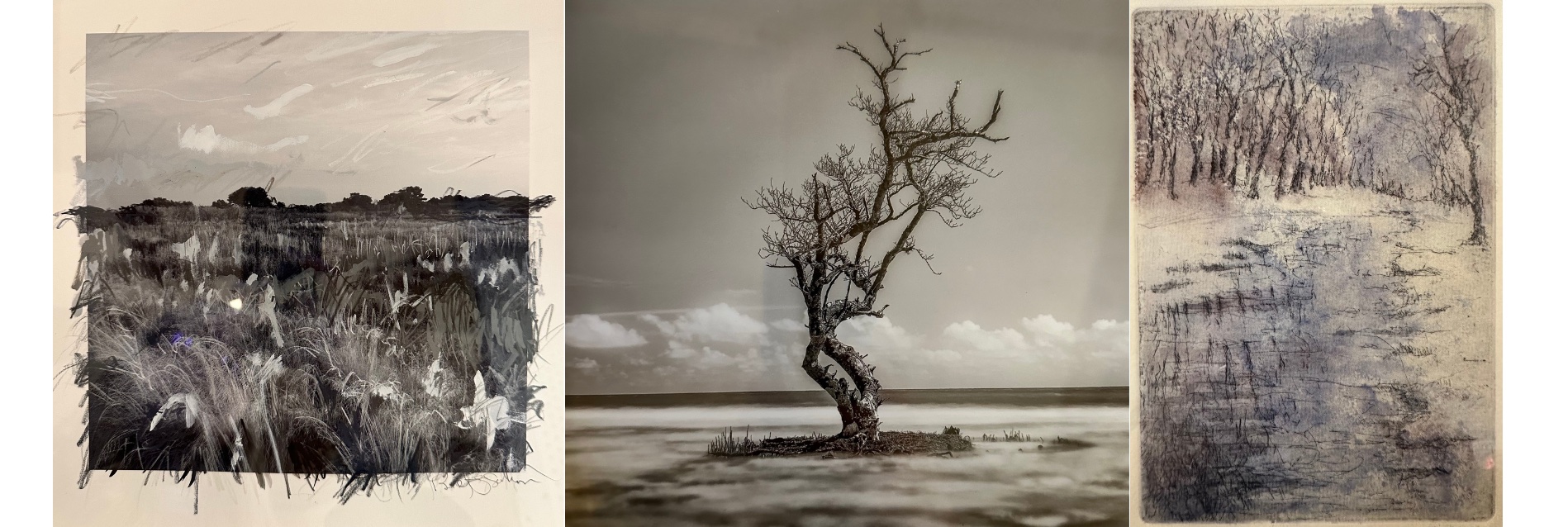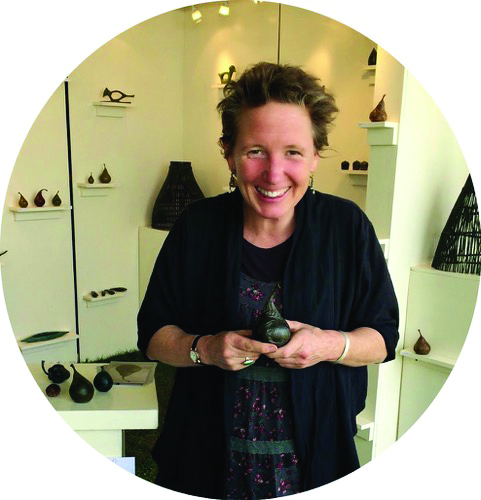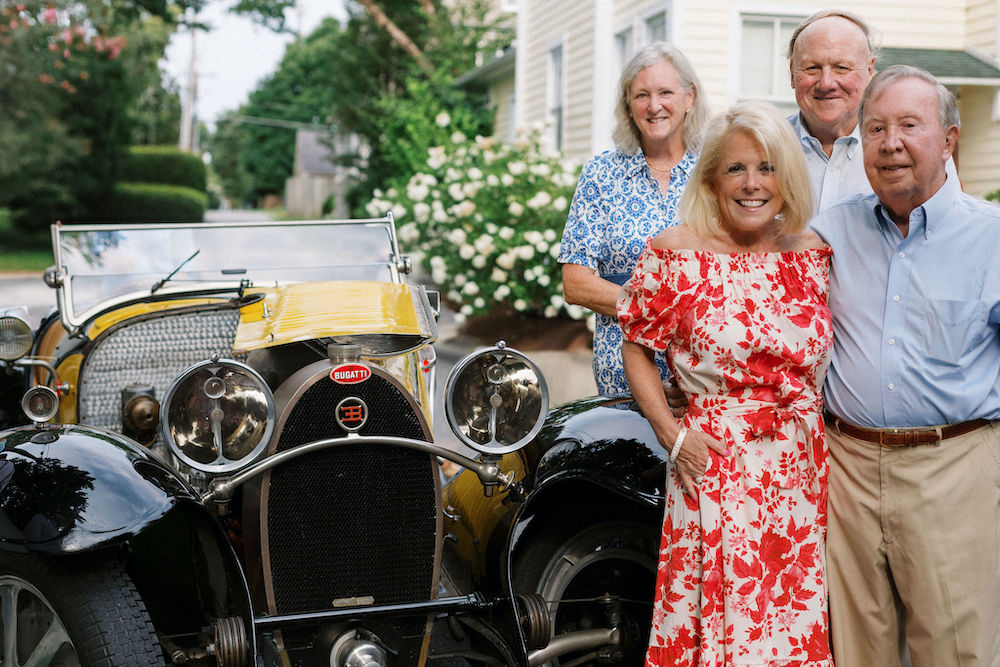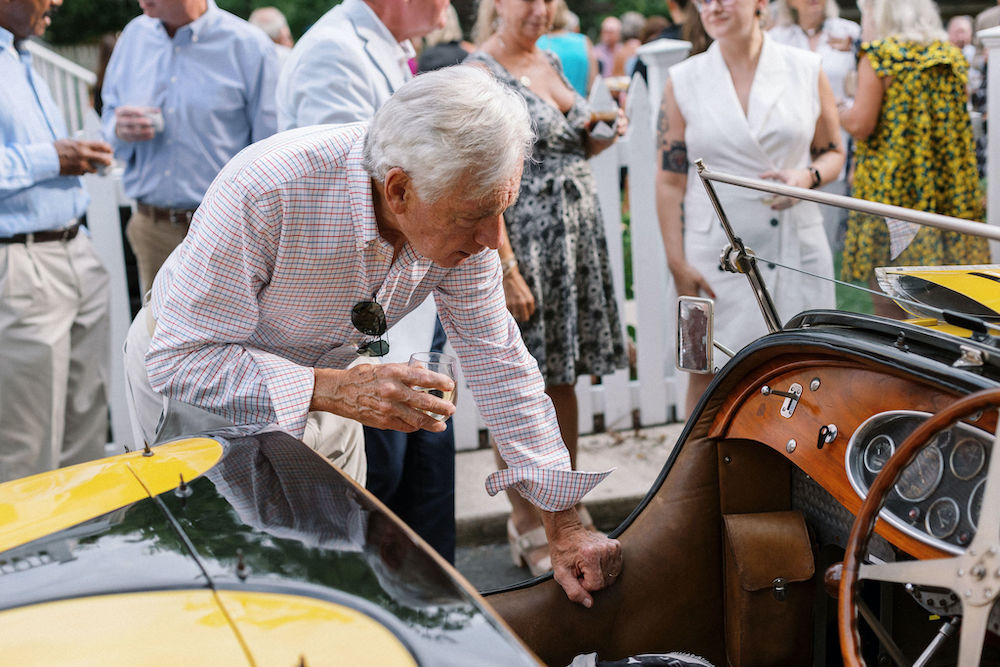|
|
|
|
|
|
|
|
|
|
|
|
|
|
|

Nonpartisan and Education-based News for Cambridge
|
|
|
|
|
|
|
|
|
|
|
|
|
|
|
The Spy Newspapers may periodically employ the assistance of artificial intelligence (AI) to enhance the clarity and accuracy of our content.
This December, the Academy Art Museum invites you to relive the glamour and innovation of the Jazz Age at the Bugatti Exhibition Preview Gala Reception. Held on December 5, 2024, from 6 to 8 pm, this black-tie-optional affair offers an unforgettable evening of refinement, artistry, and celebration.
Your night begins with a red-carpet welcome, where a photo opportunity ensures you can capture this moment of timeless elegance. Inside, indulge in signature cocktails inspired by Bugatti’s era of innovation and enjoy hors d’oeuvres crafted to reflect the exquisite artistry of the exhibition.
As a gala guest, you’ll be among the first to experience Bugatti: Reaching for Perfection. This exclusive preview, with timed entry, offers a rare and intimate look at Bugatti’s masterpieces of design and engineering. From the aerodynamic lines of the Bugatti Type 35 to the unparalleled craftsmanship of the marque’s other iconic creations, the exhibition celebrates the visionary artistry that has defined the Bugatti name for generations.
The evening will also feature a live performance by Hill Chamber Music, whose elegant repertoire provides the perfect accompaniment to the gala’s sophisticated ambiance. As the trio performs, the museum’s atmosphere will evoke an era when style, precision, and creativity reigned supreme.
The Bugatti Exhibition Preview Gala Reception is not just an event—it’s a celebration of the extraordinary. Much like Bugatti’s legacy, the evening is a testament to the fusion of art, design, and innovation that continues to inspire.
Tickets for this exclusive event are limited. Reserve yours today and join the Academy Art Museum in unveiling the timeless allure of Bugatti while supporting the museum’s mission to bring world-class art and design to our community.
For more information and tickets, visit academyartmuseum.org/events/bugatti-preview-gala.
The Spy Newspapers may periodically employ the assistance of artificial intelligence (AI) to enhance the clarity and accuracy of our content.

Laura Baring-Gould,
AAM Interim Director Jennifer Chzranowski and Museum Trustees Diz Hormel (2024 Craft Show Chair) and Donald Wooters (2024 Craft Show Co-Chair) sat down with Laura Baring-Gould, the Featured Artist at this year’s Craft Show, to learn more about her creative practice and how it has evolved from large-scale public sculptures to craft, which Baring-Gould describes as “discrete, beautiful hand-held things.” The interview has been edited for length and clarity.
Diz: The Museum is thrilled to have you as our featured artist for the 2024 Craft Show. Can you tell us about your background and how it influenced your work?
LBG: As a young child I grew up in Costa Rica, Mexico, New York and California, and in the early 1970’s we settled in Alaska. As a family, we built cabins surrounded by cottonwood trees, started alternative schools, and spent time surrounded by infinite awe. Alaska was also a place where I experienced incredible community as people organized to protect wild landscapes and codify indigenous land rights. Trying to weave these together, I imagined an adult life as a scientist who would preserve wonder through public policy, so I studied sciences in college. But I felt greater connection and endurance in my art classes. Once I relocated to the East Coast I saw that people living in dense cities needed awe too. Art felt like an important and immediate way to do that.
Jenn: How did you set out to do that as a young artist? Tell us more about your early work.
LBG: At first, I gave myself five years to figure it out – I was waitressing, teaching, working as an artist assistant –and making things outdoors responding to the landscapes I could work in: lines of fallen birch trees or hundreds of pine-cones woven across a woodland park. These site-specific pieces led to large-scale work inside museums and galleries – illuminated boats suspended above 11 tons of salt in a converted wooden chapel, or a giant beehive made of wound straw in a museum abutting historically rich agricultural farmland. These projects were ambitious and required the help of many. Some were artists, others were not – but together we were transforming materials to make these magical spaces for people to understand something about the places they were in, but to also feel connected and inspired. As my practice developed, I was invited to create more substantial temporary and permanent public artworks. These pieces also required close collaboration with the local community so the work could truly be public as it honored what people feel connected to and care about.
Don: You’ve done a lot of casts of pears. Tell us about the outdoor giant bronze pear.
LBG: The public artwork I am most well-known for is a twelve-foot bronze pear that celebrates Dorchester, a community in Boston where the Clapps’ Favorite pear was first grown in 1830. It’s a cross pollination between the Bartlett, known for its hard skin, and the Flemish Beauty, resulting in a tough -skinned pear that inside was sweet as butter – which basically describes everybody who lives in that community.
Diz: Can you tell us about your method for casting pears? 
LBG: The first pieces I made of pears were not ripe ones. I instead took slumping pears far past their prime and encased them in ceramic. After a two-week process of building up the ceramic, I fired pieces in the kiln, burning up the pear and leaving a hollow space in the ceramic. This negative space – the mold –gets filled with molten bronze. Once cool, I would crack off the ceramic to reveal the original pear –the same thing, but totally different. The entire process amazed me.
My studio was filled with rotting fruit and small bronze objects when I was asked to propose a project for Dorchester. I obviously could not create a monument of a rotten pear, but I knew that the humble fruit and its stewardship might really resonate.
Don: So how did you pivot to craft?
LBG: While I was making these bigger artworks, I was also finding my own refuge in making smaller pieces that transformed impermanent objects into talismans of experience.
I participated in my first Craft exhibition almost 20 years ago and loved the immediate connection people had to these bronzes and how they felt in the palm of a hand. I loved, too, the idea of taking ephemeral objects – sewn children’s caps, bamboo baskets, fish traps, or even a magnolia branch with a bird’s nest, and casting them into permanent metal.
Diz: These pieces are so tactile. You just want to hold them. They have a solidity and permanence, but at the same time appear so delicate. How do you bring out that juxtaposition?
LBG: It is important to hold something and have it affect you. It’s important that people at weddings have held my pieces and shared them with those they love, and equally important that others have died holding these pieces as well. While I am
thankful for the bigger public artworks that exist out in the world, these objects can be with you.
Jenn: It seems that your background in science continues to inform your work. Is that accurate?
LBG: 100% yes – in every aspect of my work: I am a naturalist who collects and studies pears from heirloom trees and am amazed by the material science of bird’s building their nests. The entire process of casting, metal work, and patina are also all about material technology and experimentation.
Jenn: After working with artists and organizing AAM’s Craft Show for the past 6 years, I know that the circuit can be grueling. What is it about craft shows that keep you coming back?
LBG: I have been able to continue to be an artist because I unlocked the world of craft and found this essential community that values artists’ work. I love sharing my work with people, from small shows to the Smithsonian. And it is the work of organizations that hold it together – places like the Academy Art Museum– that bring people together to share stories and experience something special. The people who want to share the story and the people who want to receive the story. Even just one connection, one moment of magic. And that’s how I think lives are changed, right?
The Spy Newspapers may periodically employ the assistance of artificial intelligence (AI) to enhance the clarity and accuracy of our content.

The Academy Art Museum is pleased to invite the public to two exciting events as part of the Academy’s 2024 Annual Craft Show, including a Masquerade Ball Preview Event Party and Sunday Brunch.
Join us on Friday, October 25 from 5:30-9 pm, for an evening of fashion, fun, and early access to the shopping event of the season! Dress in costume or chic cocktail attire for our extraordinary Masquerade Ball. Bring your own mask or purchase an original meticulously crafted by your favorite local artists, including Rosemary Cooley’s beautiful print-making masks, Diane DuBois Mullaly’s playful designs, as well as an assortment by other local talent, available as an exclusive add-on to your ticket. Enjoy delectable food, listen to lively music, and grab a signature cocktail as you walk around in style to shop from an array of over 60 exhibitors in a variety of mediums! Get ready – the inspiration is bound to strike with two distinct fashion shows in the Waterfowl building and the Academy Art Museum, showcasing unique creations by this year’s fiber wearable and jewelry artists!
As the weekend comes to an end, relax at our Sunday Brunch on October 27, 10 am-1 pm, catered by Piazza Italian Market. Delight in fresh pastries, fruit, a selection of frittatas, salad, freshly brewed coffee, and a Bloody Mary and Mimosa bar. This is the perfect opportunity to wind down after a weekend of excitement or to get a head start on Sunday’s shopping.
Tickets to the Preview Party and Sunday Brunch include weekend-long admission to the 2024 Craft Show. The hours for the Craft Show are 10 am-5 pm Saturday, October 26, and 10 am-4 pm Sunday, October 27. Patrons will be able to vote for their favorite artist for the Craft Show People’s Choice Award which will be given on Sunday morning to the artist with the most votes. Admission to the Craft Show is $10 per Museum member and $12 for non-members, which includes a Craft Show tote bag. For tickets to Craft Show events and classes, please visit academyartmuseum.org.
The Spy Newspapers may periodically employ the assistance of artificial intelligence (AI) to enhance the clarity and accuracy of our content.

Left to Right: God’s Little Secret by Nancy South Reybold, Peony by Jane Selden, Cooper’s Cousin by Susan Schauer John
The Academy Art Museum is excited to present to its members the opportunity to exhibit in “Small Originals: Members’ Exhibition 2024,” on view November 22-December 29, 2024. As one of the most anticipated events of the year, this exhibition draws upon The Academy’s pool of talent, offering a unique opportunity for local artists, students, and teachers to exhibit a broad range of work side-by-side. This is the occasion for members to showcase their accomplishments, celebrate with family and friends, and exhibit work in front of a wide selection of local and visiting collectors during the festive holiday season!
Participation in the Member’s Exhibition is not juried. Anyone with a current membership, valid through the end of the year, may enter one artwork. Accordingly, all entries are eligible for awards. This year brings new awards in Fiber and Sporting Art, along with our traditional roster of awards for painting, prints, ceramics, and wood pieces. Artists must register for the exhibition using the online form on the exhibition’s webpage by October 21, 2024 and may choose to offer their artworks for sale during the exhibition.
The Academy Art Museum is pleased to welcome Robyn Asleson, Curator of Prints and Drawings at the National Portrait Gallery, Smithsonian Institution, as this year’s judge. Her exhibition projects at the Portrait Gallery include “Brilliant Exiles: American Women in Paris, 1900–1939” (2024), the team-curated “Kinship” (2022), and “Portraits of the World” (2016-20), a series of spotlight exhibitions featuring individual portraits on loan from international museums, placed in conversation with works from the Portrait Gallery collection. She was also venue curator for the exhibition “John Singer Sargent: Portraits in Charcoal” (2020).
To ensure all members who are interested in participating can enter, submissions will be limited to maximum dimensions of 13 x 13 inches for 2D artwork and 15 x 15 x 15 inches for 3D artwork. A maximum 2-inch frame may be used for 2D artwork. Art drop-off will take place November 12 and 13, Noon-4 pm and on November 14, 4-7 pm at the Waterfowl Building.
A public reception will be held on Friday, November 22, 5-7 pm, and we encourage all to attend for award announcements and refreshments. This is a great chance for attendees to meet the artists and to purchase unique, original art by local talent to take home for the holidays!
The Spy Newspapers may periodically employ the assistance of artificial intelligence (AI) to enhance the clarity and accuracy of our content.
Shore Lit and the Academy Art Museum invite you to a book talk with Nicole Chung, author of the acclaimed 2023 memoir A Living Remedy—named a Notable Book by the New York Times and a “Best Book of the Year” by more than a dozen outlets, including Time, USA Today, Esquire, Harper’s Bazaar, Electric Literature, and TODAY.
Nicole Chung lost both of her adoptive parents suddenly within two years of each other. Living across the country, hamstrung by Covid restrictions, limited by financial concerns and the demands of parenting her own children, she struggled to find ways to support them. This intimate memoir “explores the difficult emotional terrain of grief, while also delivering a powerful social commentary that poses vital questions about access to medical care and the meaning of home and family,” writes Qian Julie Wang for the Washington Post.
Chung will discuss A Living Remedy with Shore Lit Founder Kerry Folan at 7:00 pm on Friday, October 11. This event is free and open to the public, though reservations are required through the Academy Art Museum website.
Nicole Chung’s memoir A Living Remedy was named a Notable Book by The New York Times and a Best Book of the Year by over a dozen outlets. Chung is also the author of All You Can Ever Know, a national bestseller and finalist for the National Book Critics Circle Award, which landed on multiple Book of the Year lists and has been translated into several languages. She has written for The New York Times Magazine, The Guardian, Time, The Atlantic, Esquire, and many other publications. Previously, she was digital editorial director at the independent publisher Catapult, where she helped lead its magazine to two National Magazine Awards; before that, she was the managing editor of The Toast and an editor at Hyphen magazine. Born and raised in the Pacific Northwest, she currently lives in the Washington, DC area.
Shore Lit is based in Easton, Maryland, and aims to enhance local cultural offerings with free author events open to the public. Our programs are designed to explore relevant ideas, foster literary conversation, and build inclusive community. Upcoming events include a book talk with novelist Henry Hoke, who will be in conversation with Shore Lit founder Kerry Folan about his award-winning novel Open Throat on November 15. The event will feature a monologue performance by actor Mike Sousa. For updates, sign up for our monthly newsletter at shorelit.org.
The Academy Art Museum’s mission is to promote the knowledge, practice, and appreciation of the arts and to enhance cultural life on the Eastern Shore by making the Museum’s expanding collection, exhibitions, and broad spectrum of arts programs available to everyone. Museum admission is free and open to the public 10:00-4:00 Tuesday-Sunday.
The Spy Newspapers may periodically employ the assistance of artificial intelligence (AI) to enhance the clarity and accuracy of our content.

Charlotte Potter Kasic
The Board of Trustees of the Academy Art Museum is delighted to announce the appointment of Charlotte Potter Kasic as its next Director.
Currently serving as Executive Director of the Barry Art Museum at Old Dominion University in Norfolk, Virginia, Charlotte is an accomplished administrator and visual artist, whose medium is glass. During her tenure as Glass Studio Manager and Programming Director at the Chrysler Museum of Art in Norfolk, she pioneered the field of performance glass. An avid educator, Potter Kasic founded the Assistantship Program at the Chrysler and taught glass and new media courses at universities and summer programs such as Penland School of Crafts and Oxbow School of Art.
Daniel Weiss, Museum Trustee and Search Committee Chair, notes, “We are extraordinarily fortunate to have Charlotte as our new Director. She is an experienced and accomplished leader with an exciting vision for the future of the Academy Art Museum.” He added, “During the search, the Museum benefited from the exceptional leadership of Interim Director Jennifer Chrzanowski and we are well positioned for the years ahead.”
In accepting this position, Potter Kasic said, “As I step into this new role, I am particularly excited to reconnect with my artistic roots and engage with the Museum’s studio programs and to foster an enhanced dynamic relationship between classes and the exhibition schedule. This holistic approach to programming is integral to my vision for expanding the Museum’s educational and cultural impact. I am also thrilled by the Museum’s ambitious and thought-provoking programming, such as the upcoming exhibition, ‘Bugatti: Reaching for Perfection’. The Museum’s trustees and staff are passionate, dedicated and committed professionals. Together, we will ensure that the Academy Art Museum continues to thrive as a center for creativity, education, and community engagement.”
The Spy Newspapers may periodically employ the assistance of artificial intelligence (AI) to enhance the clarity and accuracy of our content.

Nanny Trippe, Robert Fogarty, Maureen Fogarty and Judge North at the Garden Party for the Bugatti Royale Circle.
Robert Fogarty, Academy Art Museum Trustee, and his wife Maureen hosted a delightful garden party in the East End neighborhood to support the Academy Art Museum’s most ambitious exhibition to date, “Bugatti: Reaching for Perfection.”

Donald Martin taking a closer look.
Guests enjoyed drinks and hors d’oeuvres while admiring two classic Bugatti cars brought to the event by the North Family. In speaking to the guests, Lee Glazer, Senior Curator of the Museum, described the three generations of Bugatti men who designed automobiles, sculpture and furniture, and the Museum’s plan to feature extraordinary examples of each.

MaryLou Peters, co-chair of Bugatti Royale Circle (second from left) with friends Debbie Potter, Dale Rauch and Terry Witowsky
MaryLou and Joseph Peters, co-chairs of the Bugatti Royale Circle, emphasized the crucial need for financial support to cover the expenses associated with bringing such a high-caliber event to Easton and encouraged guests to become members of the Circle.
The Bugatti Exhibition opens at the Academy Art Museum with a Gala on December 5. For more information about “Bugatti: Reaching for Perfection” and the Bugatti Royal Circle, visit academyartmuseum.org/bugatti-reaching-for-perfection/
The Spy Newspapers may periodically employ the assistance of artificial intelligence (AI) to enhance the clarity and accuracy of our content.
The Academy Art Museum announces its most ambitious exhibition to date, Bugatti: Reaching for Perfection, opening with a special gala preview on December 5, 2024. The exhibition will open to the public on December 6, 2024, and run through April 13, 2025. It will feature rare automobiles, sculpture, and furniture by the Bugatti family, along with other objects and ephemera related to the renowned marque. In addition to furniture borrowed from the Museum of Fine Arts, Houston, and the Virginia Museum of Fine Art, Bugatti: Reaching for Perfection will showcase works from two important private collections never-before seen together: eight bronze sculptures from the Arsidi-Scuderi Collection of Lugano, Switzerland, and five vintage Bugatti cars and other automotive elements from the North Collection of the Eastern Shore, Maryland. Highlights include two grand prix race cars, two Type 57 touring cars, and a miniature “Baby.”
A Multigenerational Story of Modern Creativity and Innovation
The exhibition will explore the rich artistic and technological legacies of the peripatetic Bugatti family, beginning with patriarch Carlo Bugatti (1856-1940). His fin-de-siècle furniture designs, which debuted at international expositions in London, Paris, Milan, and Turin, are noteworthy for their fanciful combination of materials: ebonized wood inlaid with copper, brass, ivory, mother-of-pearl, and vellum, which he often decorated with leather tassels, geometric marquetry, and painted designs. Sons Ettore (1881-1947) and Rembrandt (1884-1916) inherited their father’s artistic passion but pursued different paths.

Carlo Bugatti, Hall Bench, c. 1890s. Wood, parchment, copper, brass, paint, leather. Virginia Museum of Fine Arts. Gift of Lloyd and BarbaraMacklowe. 89.141. Photo: Troy Wilkinson. © Virginia Museum of Fine Arts.
Rembrandt had a tragically brief career as a sculptor, producing deeply empathetic and impressionistic portraits of animals. Ettore, meanwhile, became a celebrated automobile designer and manufacturer. According to automotive scholar and guest curator Ken Gross, Bugatti’s technical advances were inextricably linked to—even indistinguishable from—their formal beauty: “Everything about Bugatti was artistic: the cars, their advertising, and the enduring joie de vivre associated with the marque.” The cars that he and his elder son, Jean (1909-1939), designed came to epitomize the speed and dynamism of modernity.

Rembrandt Bugatti, Leaping Kangaroo, 1907. Arsidi-Scuderi Colleciton. Photo: Peter Harholdt.
Visitors to the exhibition will be able to immerse themselves in the Bugatti family story as they view the furniture, cars, sculptures, photographs, advertisements, and other ephemera. These pieces and the stories behind them will provide a deeper understanding of the family’s creative passions, their pursuit of perfection, and their place within the history of cultural modernity. “Although Ettore Bugatti famously declared, ‘Perfection is never reached,’ he obsessively pursued it throughout his career,” said senior curator Lee Glazer.

1936 Bugatti Type 57 Atalante, Chassis no. 57456. Private Collection. Photo: Peter Harholdt
Expanding Access and Audience
Maryland’s Eastern Shore is a major destination for car collectors, thanks to the annual St. Michaels Concours d’Elegance. Bugatti: Reaching for Perfection aims to attract concours attendees and car collectors who are not necessarily regular Academy Art Museum visitors. Special “hoods up” days and other programs will offer behind-the-scenes experiences and special access to subject-matter experts.
The exhibition supports the museum’s commitment to education, outreach, and inspiration for all. With no admission fee, Bugatti: Reaching for Perfection will be accessible not only to car enthusiasts and collectors, but to art and design lovers, and the broader community, including students and residents of the mid-Atlantic region and the Eastern Shore.
Save the Date
The exhibition opens with a gala preview on December 5, 2024, and will open to the public on December 6, 2024 and run through April 13, 2025.
Sponsors
We are grateful to the following organizations for making this exhibition possible. Preliminary sponsors include lead sponsor Blue Point Hospitality with additional support from Arlington Associates, Benson & Mangold, Boxwood Estate Winery, Brown Advisory, Chuck Mangold, Jr./Benson and Mangold, Easton Utilities, Eben Finney/Brown Advisory, Grayce B. Kerr Foundation, J.P. Morgan Private Bank, McHale Landscape Design, Shore United, The Oaks, Tidewater Inn and Wye Financial.
The Spy Newspapers may periodically employ the assistance of artificial intelligence (AI) to enhance the clarity and accuracy of our content.
|
|
|
|
About the Academy Art Museum Location: 106 South Street, Easton, Maryland |
The Spy Newspapers may periodically employ the assistance of artificial intelligence (AI) to enhance the clarity and accuracy of our content.